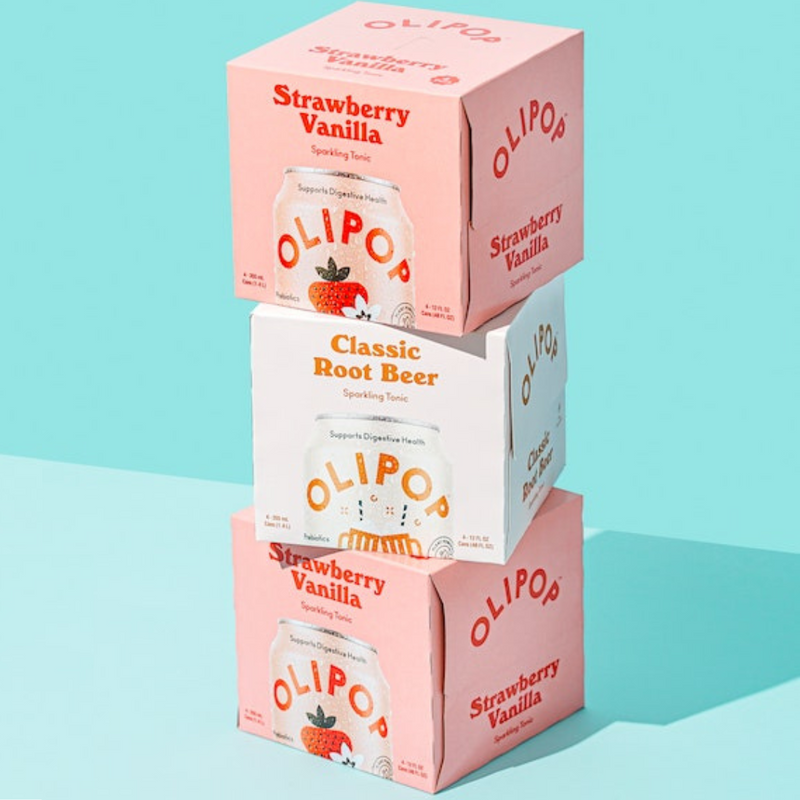Are you the kind of person who takes time to read your food's nutrition labels? We like you already! If you take an interest in the ingredients you are putting into your body, you may have noticed cassava root as an ingredient in a few of your favorite foods. It's grain-free, gluten-free, and nut free. That's why it's becoming super popular in more and more items ranging from protein bars to fluffy baked goods.
So what do you need to know about cassava root? We did the heavy lifting and put together this guide to everything you need to know about this popular starch.
What Is Cassava?
If you’re not sure if you’ve consumed cassava root before, there's a good chance that if you've devoured tapioca pudding or boba, you've unknowingly consumed the root vegetable.
While we most often reference cassava root when talking about this ingredient, this plant is more than just the tuber that grows underground. Cassava is a woody shrub with fan-shaped leaves that’s native to South America. Other names for cassava include yuca, manioc, mandioca, casabe, and tapioca. Sometimes, people mistake cassava for yucca but yucca is a separate, ornamental plant.
Cassava root is the starchy, fibrous tuber of this plant that has a slightly nutty, earthy taste. Likely first cultivated by the Maya in Yucatán, it's been used in cooking for over 4,000 years. Today, cassava root is grown worldwide because it requires little water and has an uncanny ability to resist pests. [1] As a drought-tolerant crop, cassava can be grown on marginal soils and gives reasonable yields where many other crops do not grow well.
A perennial crop, cassava's leaves closely resemble those of castor-oil plants but are parted into five to nine lobes. Cassava's fleshy roots resemble dahlia tubers, and there are different varieties of the plant that range from low herbs to shrubs and even unbranched trees. [2]
Cassava Root Uses
As a primary source of carbohydrate, cassava is turned into gari, garri kpokpo, flour, foofo, or miondo, names given to cassava flour in various parts of the world. [3] Because it's gluten-free, grain-free, and nut-free, cassava root is most traditionally used as flour. It is a beneficial ingredient for those following Paleo, Whole30, and gluten-free diets. [4] [6]
Cassava is also a major staple food in many developing countries and provides a basic diet for over half a billion people. After wheat, rice, and maize, cassava is one of the most cultivated plants. The most commonly consumed portion of cassava is the root. In addition to being a staple food, cassava is used in various industrial applications, such as biofuels, textiles, paper, adhesives, sweeteners, glues, plywoods, and many more. [1]
A critical note is that cassava cannot be eaten raw and must be cooked before consuming. Why? This root happens to be poisonous when not cooked. (More on this below!)
Health Benefits of Cassava Root
While best known for its carbohydrate composition, cassava also contains fiber, B vitamins, and vitamin C. The main health benefits are due to its prebiotic effects.
Cassava root contains a type of prebiotic fiber called resistant starch. This type of carbohydrate “resists” digestion and passes directly through the small intestine to the large intestine where the beneficial bacteria that live in your gut ferment it. As these fibers ferment, they function as a prebiotic and feed the good bacteria in your gut. Additionally, because resistant starches do not raise glucose levels, they are suitable for gut health and a wonderful addition to a diabetic diet.
Possible Side Effects of Cassava Root
Cassava is categorized as either sweet or bitter. Like other roots and tubers, both sweet and bitter cassava varieties contain antinutritional factors and toxins, however, the bitter variety include much more significant amounts. [6]
Raw cassava is lethal when consumed in large quantities because it contains toxic levels of a cyanogenic compound called linamarin. [6] A cyanogenic compound is a compound that, when digested, your body turns into the toxic chemical hydrogen cyanide. To adequately clean and process cassava, one must dry, soak in water, rise or bake to remove the cassava's linamarin content. In Africa, inadequately prepared cassava is a significant dilemma. It's linked with several cyanide-related health disorders, especially amongst people who are already malnourished. [6]
In the United States, the cassava sold in grocery stores is the sweet variety where the cyanide is at the surface. Therefore, peeling and cooking it through baking, boiling, roasting, or frying makes cassava root safe to consume.
How to Eat Cassava
Incorporating cassava root into your diet is very easy. Today, you can find many tasty cassava products on the market, like Siete Family Foods Cassava Flour Tortillas, Partake Cookies, Otto's Cassava Flour, Jovial Grain Free Cassava Pasta, and, of course, OLIPOP!
Along with flour and premade goods, you can consume cassava root the following ways:
- Whole root: In root form, cassava can be utilized in many of the same ways as potatoes. Therefore, its culinary methods are endless: bake, boil, grill, fry... you get the picture! Moreover, boiling cassava helps retain the root's nutritional properties, while over-processing the vegetable can waste some of its nutrients. [7]
- Tapioca Starch: This is a type of starch extricated from the cassava root through washing and pulping. The wet pulp is squeezed to extract a starchy liquid. When the water evaporates from the starchy liquid, the tapioca starch remains. [8] Tapioca starch is a grain-free substitute for cornstarch, and you can use it to thicken soups and sauces.
- Fiber extract: Cassava can be made into a fiber-rich root or syrup extract, which is added to drinks and snacks where it acts as a prebiotic fiber.
Cassava Root in OLIPOP
We use cassava root fiber in our delicious OLIPOP drinks because it is a simple way to add gut-health-supporting prebiotic fiber to our drinks. In fact, cassava is one of three prebiotic fibers that we use to support your digestive health and make sure your good bacteria are happy and healthy!
Sources
- S. Mombo et al., “A Socio-Scientific Analysis of the Environmental and Health Benefits as Well as Potential Risks of Cassava Production and Consumption,” Environmental Science and Pollution Research 24, no. 6 (December 24, 2016): 5207–21, https://doi.org/10.1007/s11356-016-8190-z.
- “CASSAVA: Overview, Uses, Side Effects, Precautions, Interactions, Dosing and Reviews,” accessed May 12, 2021, https://www.webmd.com/vitamins/ai/ingredientmono-1473/cassava.
- S. Mombo et al., “A Socio-Scientific Analysis of the Environmental and Health Benefits as Well as Potential Risks of Cassava Production and Consumption,” Environmental Science and Pollution Research 24, no. 6 (December 24, 2016): 5207–21, https://doi.org/10.1007/s11356-016-8190-z.
- Laura Scholz, “Everything You Should Know About Cassava Flour, the Allergy-Friendly Starch That’s Taking Over,” Good Housekeeping, March 28, 2018, https://www.goodhousekeeping.com/health/diet-nutrition/a19600044/cassava-flour/.
- Laura Scholz, “Everything You Should Know About Cassava Flour, the Allergy-Friendly Starch That’s Taking Over,” Good Housekeeping, March 28, 2018, https://www.goodhousekeeping.com/health/diet-nutrition/a19600044/cassava-flour/.
- “Researchers Get To The Root Of Cassava’s Cyanide-Producing Abilities,” ScienceDaily, accessed May 12, 2021, https://www.sciencedaily.com/releases/2003/05/030514080833.htm.
- Maki Yazawa, “The Safety Tip You Need to Know Before Cooking With Cassava,” Real Simple, September 22, 2020, https://www.realsimple.com/food-recipes/recipe-collections-favorites/popular-ingredients/what-is-cassava-root.
- 8 “5 Things You Need to Know About Cassava Flour,” Downshiftology, July 7, 2017, https://downshiftology.com/5-things-you-need-to-know-about-cassava-flour/.
- Cassava root is a starchy tuber that’s similar in shape and texture to a sweet potato.
- This root contains resistant starch: a type of prebiotic fiber that can support gut health by acting as a source of food for the beneficial bacteria that live in your microbiome.
- Cassava root fiber is one of three prebiotic fibers OLIPOP uses to support your digestive health.





